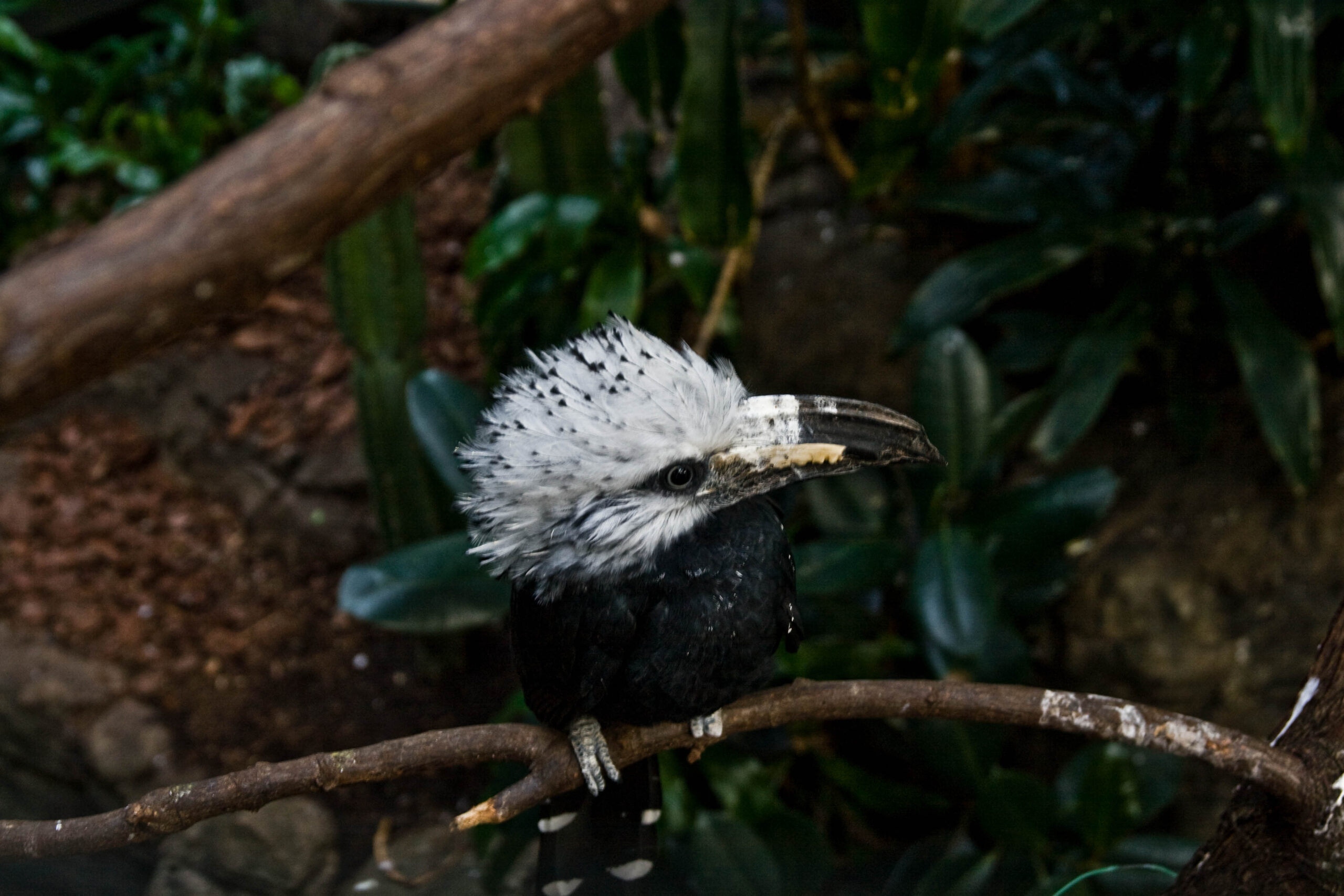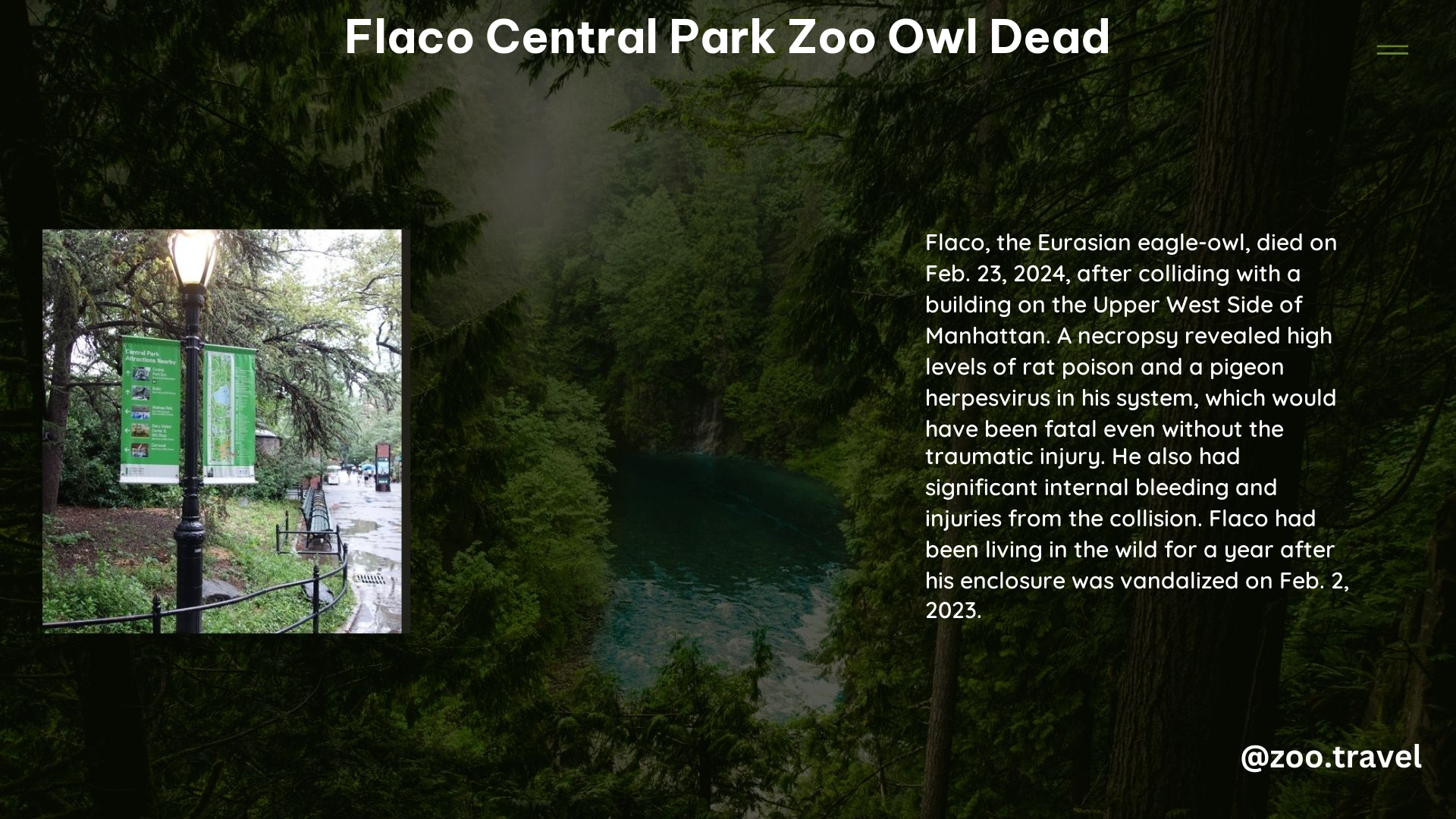Flaco, the Eurasian eagle-owl who captivated the hearts of New Yorkers after escaping from the Central Park Zoo, tragically met his demise on February 23, 2024, when he collided with a building on the Upper West Side of Manhattan. The necropsy conducted by the Bronx Zoo revealed a grim story of underlying health issues and the hazards of urban life that ultimately led to Flaco’s untimely death.
Traumatic Injury and Underlying Health Conditions

The necropsy report revealed that Flaco’s death was caused by acute traumatic injury, with significant internal bleeding observed. Despite no apparent head injuries or broken bones, Flaco exhibited hemorrhaging under his sternum and near his liver, alongside bleeding behind his left eye.
However, the investigation also uncovered two underlying health conditions that likely contributed to Flaco’s demise:
-
Pigeon Herpesvirus: Flaco had contracted a severe pigeon herpesvirus, which caused severe tissue damage and inflammation in many of his organs, including the spleen, liver, gastrointestinal tract, bone marrow, and brain.
-
Rat Poison Exposure: Flaco had high levels of anticoagulant rodenticides in his system, commonly used for rat control in New York City. These toxins would have been debilitating and ultimately fatal, even without the traumatic injury.
Urban Hazards and Vandalism

Flaco’s escape from the Central Park Zoo and subsequent time in the urban environment exposed him to numerous threats, including:
-
Collisions with Buildings: Collisions with buildings are estimated to kill over 200,000 migratory birds annually in New York City, and this ultimately proved to be Flaco’s downfall.
-
Vandalism: The vandalism of Flaco’s enclosure, which allowed him to escape, is ultimately responsible for his death. The zoo authorities are still hopeful that the NYPD will make an arrest in the case.
Zoo Response and Investigation
The Bronx Zoo veterinary pathologists conducted a detailed necropsy on Flaco, which included microscopic examination of tissue samples, toxicology tests, and testing for infectious diseases. The zoo authorities are still investigating the circumstances surrounding Flaco’s death, including the possibility of illness as a contributing factor.
Flaco’s Life in the Wild
Despite the tragic end to Flaco’s story, his time in the wild was marked by resilience and adaptability. He rapidly improved his flight skills and ability to hunt and maneuver around the park, and was observed successfully hunting and consuming prey. Flaco became a celebrated figure in New York City, with many residents following his daily movements and expressing admiration for his resilience.
References
- New York Times: Flaco, the Central Park Zoo Owl, Died from Injuries and Illness
- NBC News: Flaco, the Famous Central Park Zoo Owl, Dies a Year After Flying Free
- Associated Press: Flaco Owl’s Cause of Death Revealed
- Wildlife Conservation Society Newsroom: Central Park Zoo Releases Postmortem Testing Results for Flaco the Eurasian Eagle-Owl
- ABC News: Zoo Releases Final Necropsy Results for Flaco the Owl’s Death
